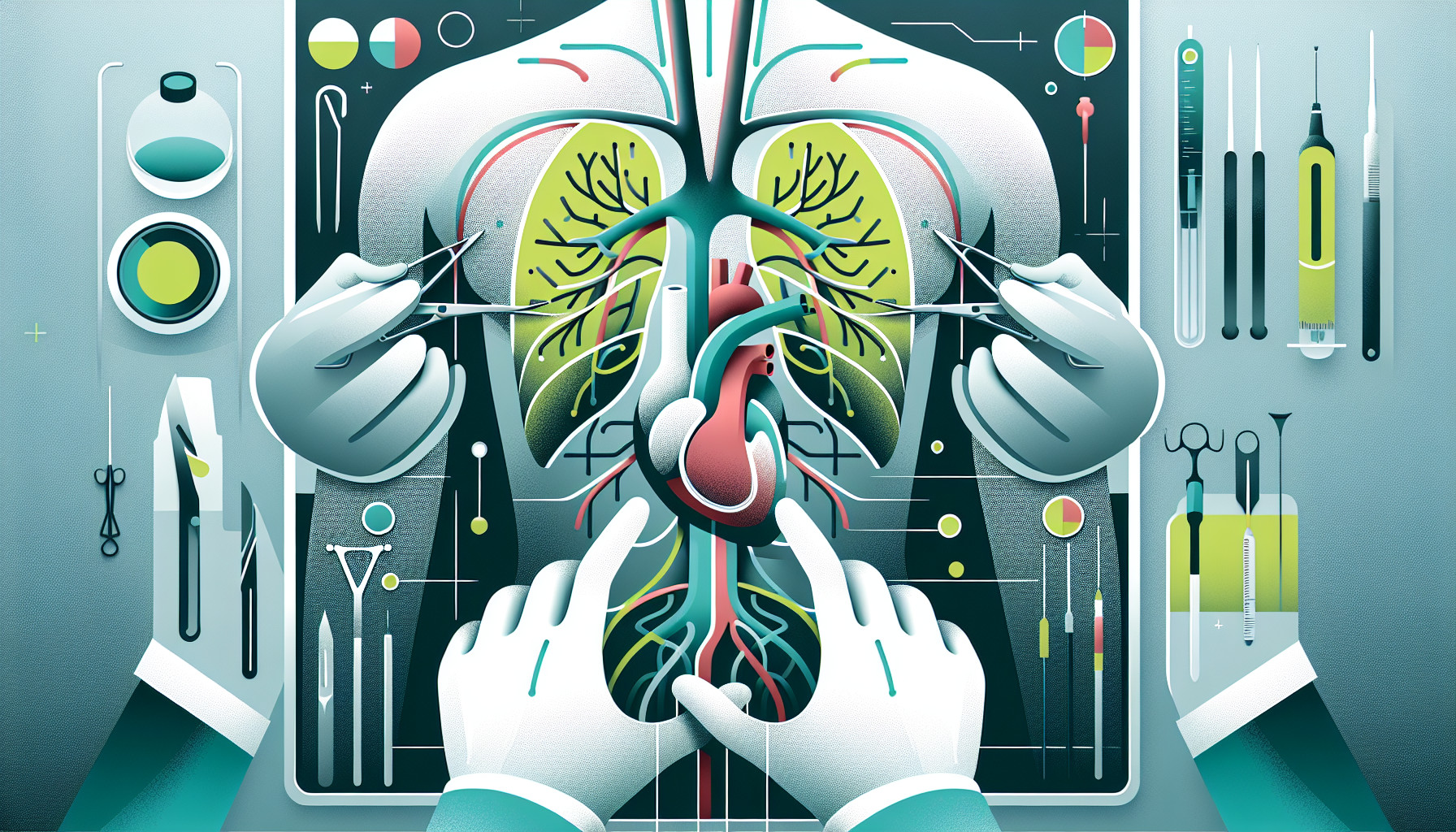Our Summary
The rupture of an abdominal aortic aneurysm (AAA), a condition where the main blood vessel in the body weakens and expands, is a significant cause of death. Currently, the only treatment available is surgery. In most developed parts of the world, AAAs can be detected early due to imaging and screening programs. However, research has shown that early surgery for small AAAs isn’t beneficial, so there’s a need for new medical treatments that can stop or slow the growth and rupture of these aneurysms.
Many scientists are working to better understand how AAAs develop and to create new treatments, such as drug and cell-based therapies. This article reviews the latest findings and theories on how AAAs develop, including the strengths and weaknesses of current animal models used for research. It also discusses potential new treatments for AAA, summarizing past, present, and potential future clinical trials of medical interventions for small AAAs.
The amount of research being done on AAAs is growing, and it’s expected that within the next ten years, a range of new medical treatments will be available.
FAQs
- What is the current treatment available for abdominal aortic aneurysms?
- Why is early surgery for small abdominal aortic aneurysms not beneficial?
- What new treatments are being developed for abdominal aortic aneurysms?
Doctor’s Tip
In the meantime, it’s important to follow your doctor’s advice on monitoring your AAA and keeping it in check. They may recommend regular imaging tests to keep an eye on the size of the aneurysm and suggest lifestyle changes to reduce your risk of complications. Remember, early detection and monitoring can be key in preventing a rupture and potentially saving your life. If you have any concerns or questions about your AAA, don’t hesitate to talk to your healthcare provider.
Suitable For
Patients who are typically recommended aortic aneurysm repair are those with an abdominal aortic aneurysm (AAA) that is at risk of rupture. This includes patients with AAAs that are large in size (usually greater than 5.5 cm in diameter), rapidly growing, symptomatic, or causing complications such as blood clots or pain.
Other factors that may influence the recommendation for AAA repair include the patient’s overall health, age, and risk factors for AAA rupture, such as smoking, high blood pressure, and a family history of AAA. In general, the decision to recommend AAA repair is based on a combination of the size of the aneurysm, the rate of growth, and the patient’s individual risk factors.
It is important for patients with AAAs to undergo regular monitoring and screening to detect any changes in the size or growth rate of the aneurysm. This allows for timely intervention and reduces the risk of rupture. Patients who are recommended for AAA repair should discuss the risks and benefits of treatment with their healthcare provider to make an informed decision about the best course of action for their individual situation.
Timeline
- Before aortic aneurysm repair:
- Patient may experience symptoms such as abdominal or back pain, pulsating sensation in the abdomen, or other signs of aortic aneurysm.
- Patient undergoes diagnostic tests such as ultrasound, CT scan, or MRI to confirm the presence and size of the aneurysm.
- Patient may be monitored regularly to track the growth of the aneurysm and determine the appropriate time for surgery.
- After aortic aneurysm repair:
- Patient undergoes surgical repair of the aortic aneurysm, which may involve open surgery or minimally invasive endovascular repair.
- Patient is monitored closely in the hospital for complications such as bleeding, infection, or blood clots.
- Patient may need to stay in the hospital for a few days to a week for recovery.
- Patient is advised to follow a healthy lifestyle, including quitting smoking, eating a balanced diet, and exercising regularly to prevent future aneurysms.
- Patient may need regular follow-up appointments with their healthcare provider to monitor the repaired aortic aneurysm and address any potential complications.
What to Ask Your Doctor
- What is the size and location of my aortic aneurysm?
- What are the risks associated with my aortic aneurysm and the repair surgery?
- What are the different treatment options available for my aortic aneurysm?
- How long is the recovery process after aortic aneurysm repair surgery?
- What are the potential complications of aortic aneurysm repair surgery?
- Will I need follow-up appointments or tests after the surgery?
- Are there any lifestyle changes I should make to prevent future aortic aneurysms?
- Are there any clinical trials or new medical treatments available for aortic aneurysms that I should consider?
- What is the long-term outlook for my aortic aneurysm after surgery?
- Are there any support groups or resources available for patients with aortic aneurysms?
Reference
Authors: Golledge J. Journal: Nat Rev Cardiol. 2019 Apr;16(4):225-242. doi: 10.1038/s41569-018-0114-9. PMID: 30443031
